
Laguna Azul, an exquisite bay in northwestern São Tomé, with hanging Baobab seed pod. Weckerphoto, GG III.
The scientific name of each living species is like the handle on a drawer, enabling biologists to pull it open and learn all that has been observed and written about that species. These names, usually Latinized or in Greek, are the most basic building blocks in any attempt to describe the Earth’s natural habitats and ecological systems… literally the first step in the exploration of unknown or poorly known habitats. First question asked: what’s living there? If no one has noted a species before, we communicate its existence by describing it and giving it a name..
Our first expedition to the islands of São Tomé and Principe was in 2001, and the first new island species our scientists described was a beetle (below). Although it was collected high in the mountains on São Tomé during our first expedition, the new name was actually published four years later.
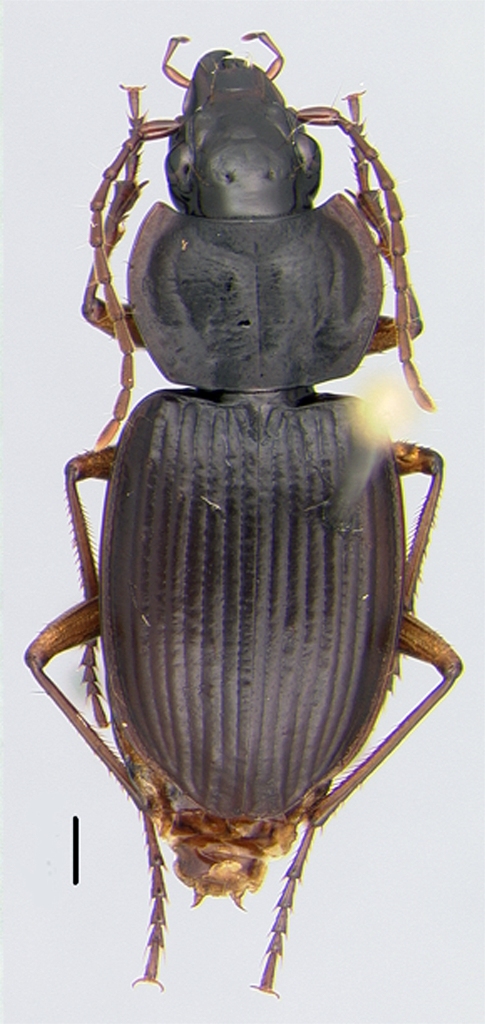
Straneo seligmani Kavanaugh, a new carabid beetle from near Macambrara, São Tomé at about 1100 m. Straneo is an endemic genus; its two known species occur only on this island..
It takes a lot of time to recognize and describe a new species; after all, the scientist has to know all of related species that the new species is not! This new beetle was named for Ned Seligman, Director of STeP UP, an island NGO. We have worked closely with STeP UP since the beginning in 2001.
Another special insect collected on our first expedition was an ant species new to science; it was described a few years later (below).

Tetramorium renae Garcia, Fischer & Peters from Bom Sucesso, São Tomé
During the past 17 years, our teams have undoubtedly collected many new insect species on São Tomé and Príncipe. But it takes a lot of time for entomologists to sort through our nearly two decades of island specimens.
The bryophyte flora (mosses, liverworts and hornworts) was poorly known before tireless Jim Shevock joined us on several recent expeditions. The new moss species described by Jim and his colleagues (below) is but the first of many awaiting publication.

Porotrichium saotomense Enroth & Shevock from São Tomé

In fact, Jim and his colleagues such as Dr. Cesar Garcia the University of Lisbon (above) have added 46 mosses, 66 liverworts and 3 hornworts to the flora of the islands so far, suggesting that this group is surprisingly rich these ancient islands .
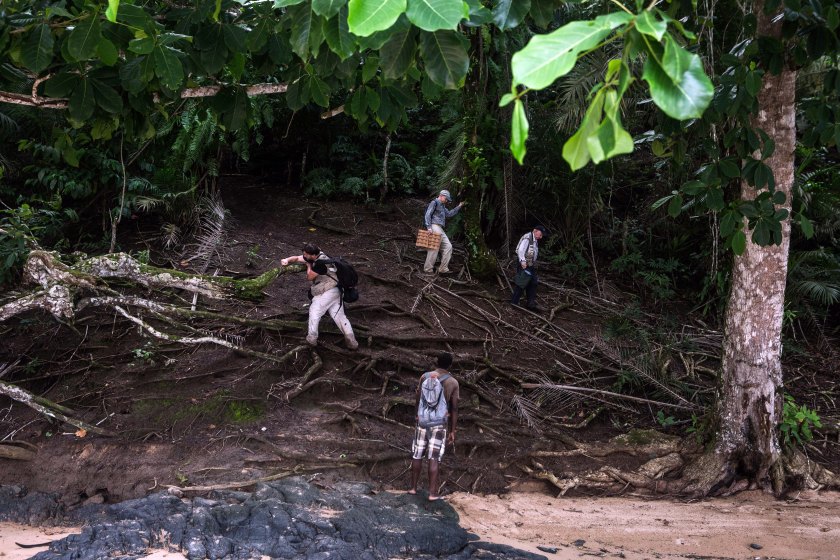
Botanists at work on Príncipe, GG XI. A. Stanbridge phot.]
Lizards are usually a fairly conspicuous part of any environment during both day and night (geckos), so it might be expected that the lizard fauna of the two islands would be well known. Not so; our teams have described one new species and are working on a second.

Hemidactylus principensis Miller, Sellas & Drewes. Weckerphoto.
This nocturnal gecko of Príncipe Island shares a unique character with its nearest relative, H. greeffii of São Tomé – the absence of the last digit on the thumb (below).

Radiograph: Hemidactylus principensis (A), H. greeffii (B)) showing absence of terminal thumb digit.
An additional new species was described a couple of years ago by Dr. Luis Ceriaco of the University of Lisbon. The skink lives on Tinhosa Grande, an islet off the south coast of Principe.
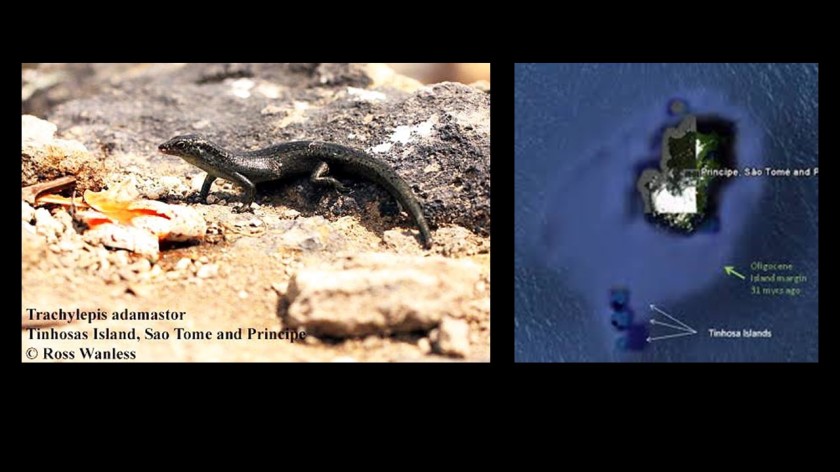
Trachylepis adamastor Ceriaco, Tinhosa Grande island.
Several earlier blogs have featured our mushroom work ; in earlier times, there were only about twelve known species on the islands. Drs Dennis Desjardin and Brian Perry collected more than 200 kinds during GG II and III expeditions, and their analysis of these specimens is ongoing.
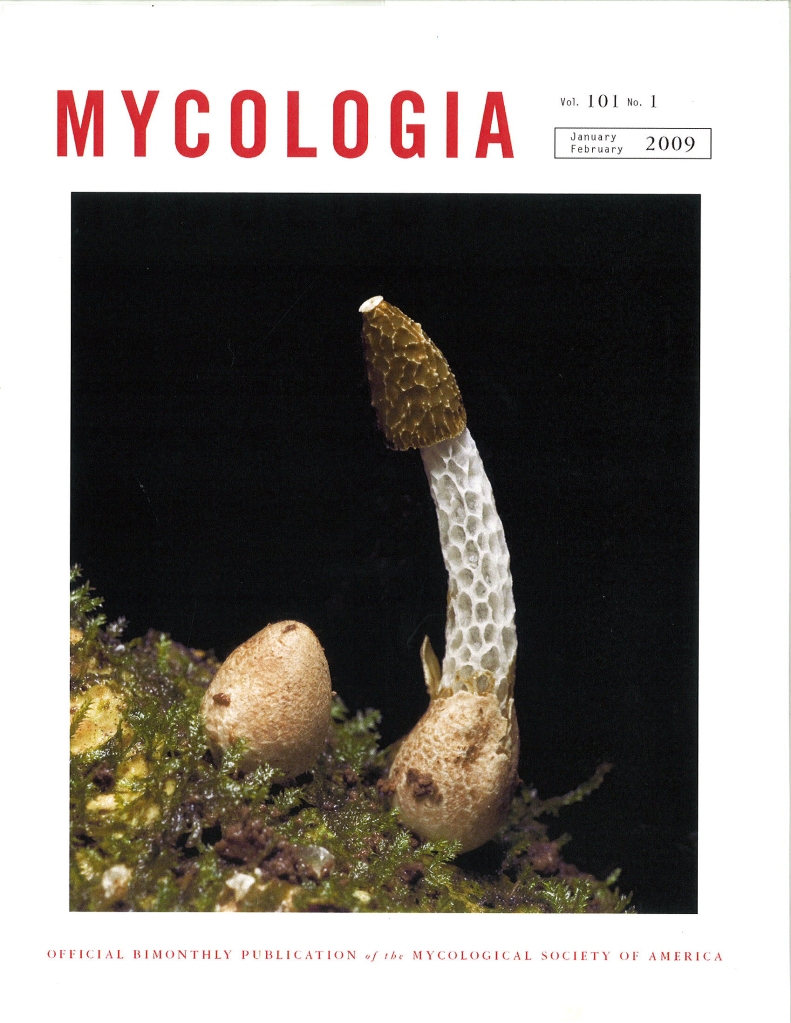
The description of Phallus drewesi Desjardin & Perry (above) was the first of the new mushroom descriptions and for obvious reasons, its shape and size received some notoriety- it is the second smallest mushroom in the genus Phallus, and it grows limp. The publication was featured on a humorous American radio show called “Wait, Wait. Don’t Tell Me!”

Scytinopogon havencampii Desjardin & Perry of Principe (above) was named in honor of a group of friends who helped fund this particular work. Earlier this year, four additional new species from both islands were described by Desjardin & Perry and just this week, the same authors published yet another scientific paper in the international journal, Mycosphere. They recognized 31 hitherto unreported fungus species on the islands, and these include ten new ones; three of the new species names commemorate individuals who have helped support our expeditions: Campanella burkeii, Gymnopus rodhallii and G. billbowesii.
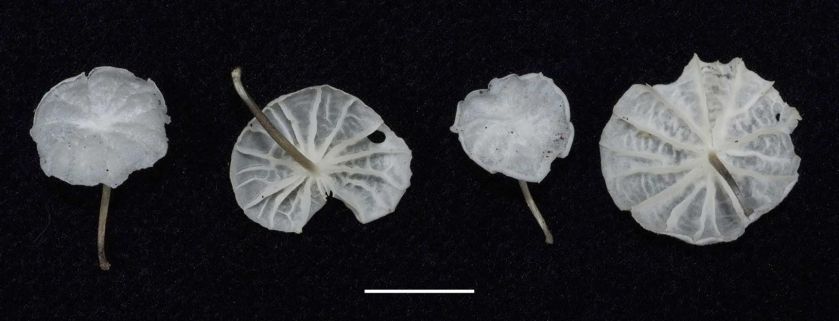
Campanella burkei Desjardin & Perry from Principe Island.

Gymnopus rodhallii Desjardin & Perry from São Tomé.
Several of our expeditions have included workers studying inshore marine organisms. Then graduate student Dana Carrison-Stone published the descriptions of two new species of barnacles she discovered during dives in 2008 (GG III).
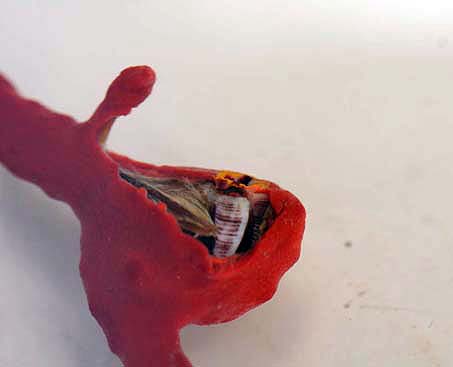
Conopea saotomensis Carrison-Stone, Van Syoc, Williams & Simison. The other new species, C. fidelis, was described in the same publication. Both were collected off Príncipe Island and formed part of the research for her MSc degree]
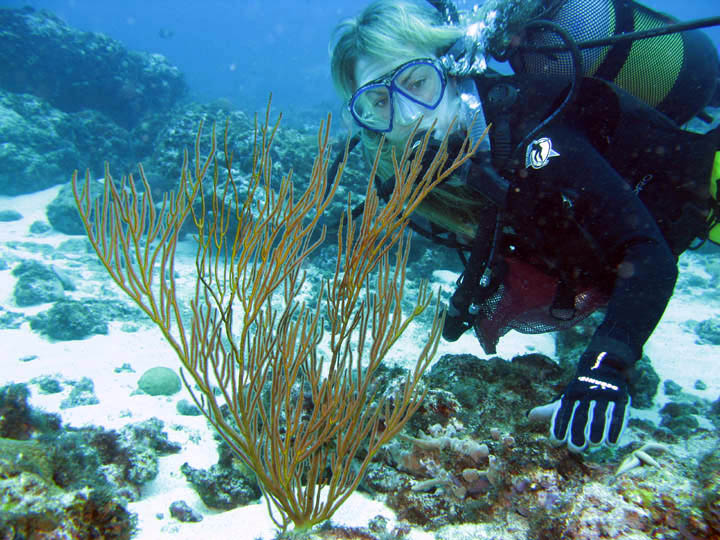
Carrison-Stone in the field off Príncipe, GG III
Drs Tomio Iwamoto and Luis Rocha have both worked on our Gulf of Guinea expeditions, Tomio since the very beginning in 2001. Luis has led several separate diving expeditions there including GG X in 2016 .

Serranus pulcher Wirtz & Iwamoto (above) was described from a specimen Tomio caught by rod and reel off the pier of Ned Seligman’s house on the northeastern shore of São Tomé during GG II. Luis named Sparisoma choati Rocha, Brito & Robertson (below), a new parrotfish from the waters of Príncipe just last year (Rocha phot).

Amphibians are not supposed to occur on islands that have never been attached to a mainland source. This point has been made about oceanic islands ever since islands have been studied (see early blogs in this series); for obvious reasons (salt water) the same is true for freshwater fishes. Nevertheless, São Tomé may well be unique in having eight species of endemic amphibians, two of which were discovered and described by members of our Gulf of Guinea expeditions.

Phrynobatrachus leveleve Uyeda, Drewes & Zimkus of São Tomé (above) was discovered to be genetically distinct from its Príncipe relative, P. dispar as early as 2007 by Dr. Josef Uyeda, a two-time expedition member.
A similar situation exists with the very similar small green tree frogs of the islands. Dr. Rayna Bell discovered that the two island populations were actually quite distinct from one another and named the Príncipe species, Hyperolius drewesi Bell, a great honor.
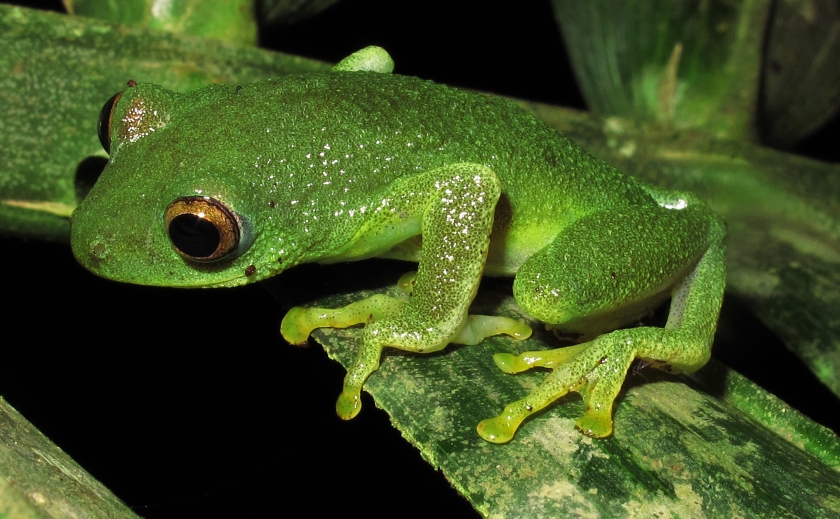
Hyperolius drewesii Bell of Príncipe. Gasparini phot.
Finally another graduate student contributor to our island work on São Tomé and Príncipe is Matthias Neumann of the University of Kassel, Germany. His fieldwork on flatworms (aka geoplanids) of the islands led to the description of five new species in a recent publication. His work is particularly relevant as many of these strange, brightly colored species are known predators of land snails, and the snail species of São Tomé and Príncipe are more than 70% endemic, found nowhere else in the world.

Various geoplanid flatworms from São Tomé among which are five new species described by Sluys and Neumann.
We will be returning to the islands once again in November.
Here’s the Parting Shot:
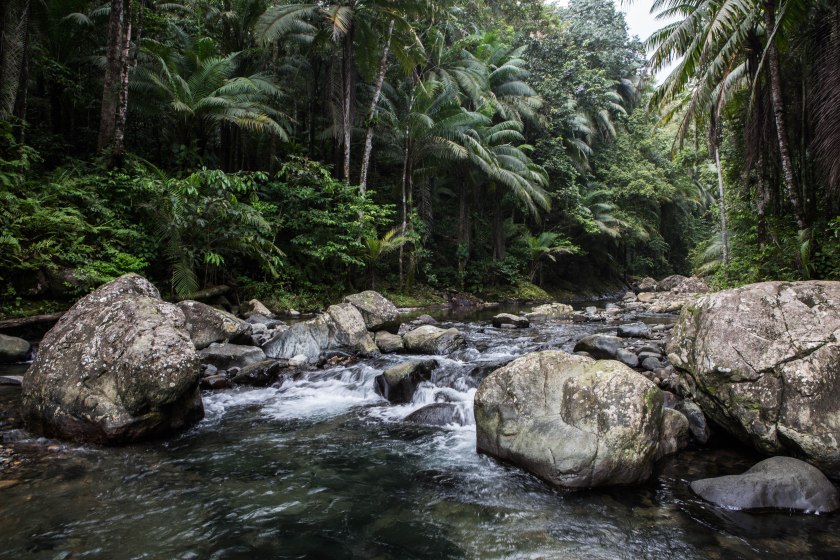
Rio Porco, at the remote southern end of Príncipe not far from new Scops owl species site (see last blog). A. Stanbridge phot.
PARTNERS
Our research and educational expeditions are supported by tax-deductable donations to the “California Academy of Sciences Gulf of Guinea Fund*.” We are grateful for ongoing governmental support from the Republic of São Tomé and Príncipe, and especially to Arlindo de Ceita Carvalho, Director General, Victor Bonfim, and Salvador Sousa Pontes of the Ministry of Environment and to Faustino de Oliviera of the Department of Forestry for their continuing authorization to collect and export specimens for study, and to Ned Seligman, Roberta dos Santos, Anita Rodriguez and Quintino Quade of STePUP of Sao Tome, our “home away from home”. GG IX, X and XI were funded in part by a generous grant from The William K. Bowes Jr. Foundation, and substantial donations from Rod C. M. Hall, Mr. and Mrs. Henri Lese, Mr. and Mrs. John L. Sullivan Jr., Mr. and Mrs. John Sears, in memory of Paul Davies Jr. and a heartening number of Bohemian friends. We are grateful for the support of Roça Belo Monte (Africa’s Eden-Príncipe) for both logistics and lodging.
*55 Music Concourse Drive, Golden Gate Park, San Francisco CA 94118 USA
